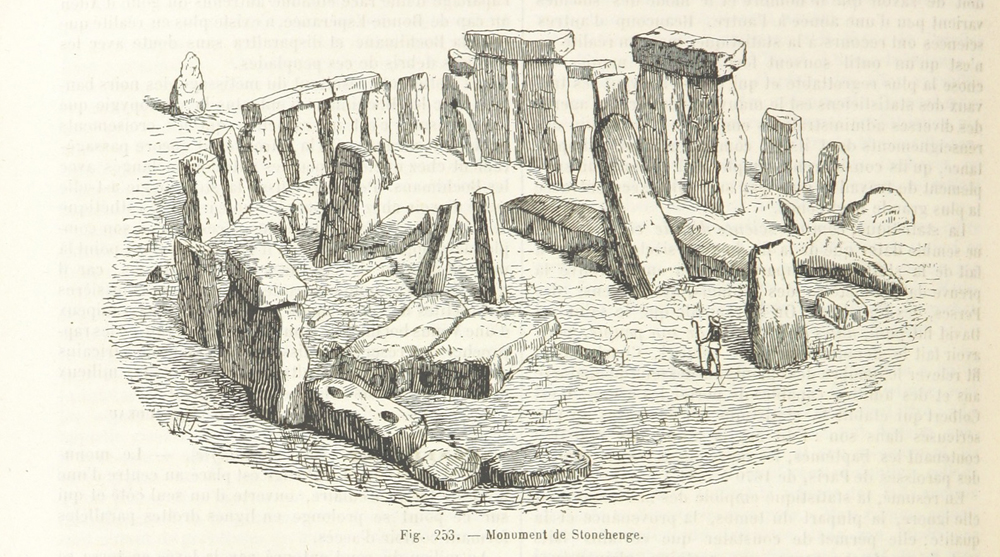Modern architecture has grown and developed from centuries of innovation and invention from past civilizations. And while new technology has meant for dramatic changes in how we live and function as a society, many of the basic concepts of architecture still draw on how ancient civilizations operated. Dating back to the dawn of humankind, architecture has had to serve similar basic functions but in dramatically different ways, and looking into our past could help us create and design our future.
1. Prehistoric architecture
Though not much prehistoric architecture has survived into the modern era, there’s no denying that mankind’s first attempts to manipulate their surroundings has heavily influenced architecture throughout the centuries.
It’s hard to imagine how humans viewed the world over 10,000 years ago, but even then - before there was even writing to record their efforts - prehistoric man constructed stone circles, megaliths, and structures that still confuse archeologists to this day. From the giant slabs of Stonehenge to cliff dwellings and even thatch and mud structures, there are a few patterns that ancient man conceived of even then.
Prehistoric geometric forms
The very limited scope of prehistoric architecture mainly centres on geometric forms, possibly drawing inspiration from the most influential and god-like forms around them: the sun and the moon. Circular shapes are at the heart of most of the prehistoric architecture that has been uncovered, including simple circular earth mounds to the layout of the monolithic Stonehenge.

Stonehenge shows a prehistoric appreciation of geometric forms. Image source
Though very simplistic in comparison to the civilizations that followed, the geometric forms and structures that have been found at the very least raise the question, what is architecture?
2. Egyptian architecture
Though there were other civilizations that were emerging and developing their own architectural style around a similar time - such as the Sumerians in Mesopotamia and Persia (c.3200-323 BCE) - it was the ancient Egyptians who had the biggest influence on modern architecture.
As well as creating one of the first written languages and a society of religion and a dynastic ruling class, ancient Egyptians used their unparalleled resources to create structures on a scale never before seen.
Ancient Egyptian pyramids

The Egyptian pyramids were the first monuments to be constructed on that scale. Image source
Though not especially complex, Egyptian pyramids used posts and lintels and a system of distributing weight that allowed for monumental palaces and tombs to be constructed that are still iconic structures thousands of years later in modern times.
In addition to the size of their structures, ancient Egyptian architects were among the first to employ materials such as stone; a fact that greatly influenced later Greek architecture and of course remains popular today.
3. Greek architecture
Greek architecture was the start of what is referred to as the Classical period of architecture which shaped the way we approach architecture and construction in Western colonies around the world to this day.
Greek architecture’s biggest influence on modern architecture was its creation of a set of standardised rules. This led to an aesthetically-pleasing uniformity throughout ancient Greece which was later adopted by Roman architecture.
Phases of Greek architecture

The Temple of Concordia has classical Greek architecture. Image source
Greek architecture had three main phases, the latter of which somewhat merges with subsequent Roman design: Doric, Ionic and Corinthian. The Doric and Ionic styles were prominent from 700 to 323 BCE and heralded the introduction of columns in major structures. Developed in mainland Greece, and then used in Greek colonies in Italy, the Doric style was formal and austere and the Ionic was less restrained and more decorative. Finally, the Corinthian style represented a more ornate development of the Ionic order, one that was heavily adopted by the Romans.
4. Roman architecture
There are many ways in which Roman architecture influenced modern architecture, and though Roman architects borrowed heavily from earlier Greek styles, their buildings were more highly ornate and they developed numerous concepts that were the very foundation of modern architecture.
The function of Roman architecture

Roman architects needed to create structures that impressed and entertained the public. Image source
The innovations in architecture developed by Romans were often prompted by the needs of an ever-expanding empire. Few civilizations had ever created an empire on the size and scale of the Romans, thus prompted a need for creative thinking on the part of the city planners and architects of the time. Roads, aqueducts, and sewer systems were all invented in order to service the needs of the Roman empire, and without them modern society could not function.
There was also a need for the Roman state to impress, entertain, and cater to their growing population, all within relatively confined urban areas. So in addition to roads, water, and sewers, the public required stadiums and religious temples to keep them entertained and complacent. This, together with Rome's growing desire to increase its power and majesty throughout Italy and beyond, required public buildings to be imposing, large-scale and highly functional.
This heralded further innovations such as the use of arches and concrete to create larger indoor space within palaces and temples, and huge venues like the Coliseum which still stands today.
5. Byzantine architecture
As many prominent architects moved from Italy to the new capital of the Roman empire Byzantium (now known as Istanbul in Turkey), Roman architecture evolved into something new. The growing influence of Christianity had a significant influence on Byzantine architecture, especially the way in which religious spaces were decorated.
Icons in Byzantine architecture

Byzantine churches had intricate mosaic decorations that related religious iconography. Image source
During the Byzantine period, Christian art was only allowed to be depicted in flat images, theoretically claiming a more modest appreciation of religious divinity rather than the human form. Therefore, iconography developed in a highly stylised manner in order to make the teachings of Christianity easily accessible, even to those who could not read.
This led to new decorative methods such as mosaics made from glass rather than stone, gilding, murals and relief sculptures. The style, use of colour, techniques, and use of materials have heavily influenced all manner of modern civilization, from interior decorating style to the icons at the top of your screen.
Inspired by the past or keen to design the future? Take part in one of our upcoming architecture competitions and push your creativity to its limit.
Top 3 Reasons Why You Should Enter Architecture Competitions
Curious about the value of architecture competitions? Discover the transformative power they can have on your career - from igniting creativity and turning designs into reality, to gaining international recognition.
Learn more



























